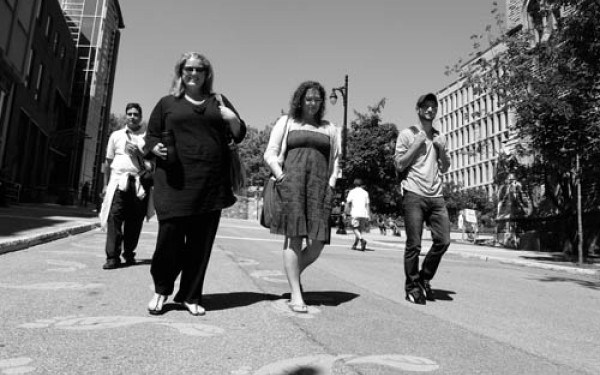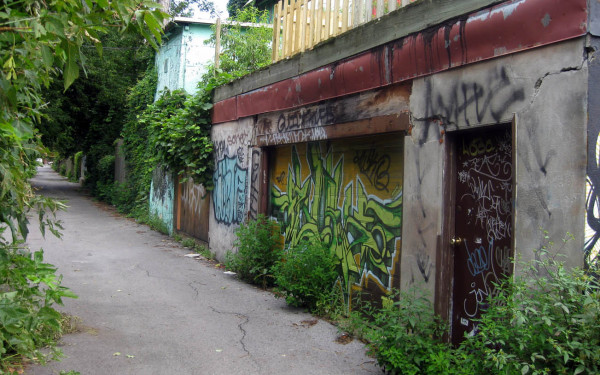Going Green in the Arena
Vancouver Olympics Set New Standard for Sporting Events
The International Academy of Sports Science and Technology is making sure that more than just the Astro-turf is green in sports stadiums.
Their nearly new initiative has invoked a new precedent for events like the Olympics, but also for minor tournaments in local communities through introduction of the Sustainable Sport and Event Toolkit, a Canadian initiative.
The toolkit gives event planners structured recommendations on how to improve sustainability, a push that has been seen in our everyday world but not fully demonstrated in sport until the Vancouver 2010 Olympics set the standard.
“The toolkit was built on the experience of Vancouver. It’s like a knowledge transfer,” said Scientific Head of Sustainability at AISTS, Dr. Tania Braga from their headquarters in Lausanne, Switzerland.
Until the 2010 games, major sporting events had no guide to rely on for green standards and the Olympics lacked any movement towards sustainability outside of a promotional campaign in 1995. Now, the SSET is a backbone to further their sustainability, building on what can be improved based on previous events.
“The SSET [is] a way for Vancouver 2010 to help organizations reproduce the same initiatives they had,” said Braga. “It was more like a legacy—a gift that Vancouver has left to other sports organizations.”
Built on the goals set at the winter games two years ago, the SSET includes action plans on how to initiate, delegate and complete sustainable plans.
Objectives include building eco-friendly stadiums, to simple actions like buying locally grown produce for cafeterias.
This gift is now in full effect at the London 2012 Olympics. The Summer Games have all the same environmental developments and more. London’s expected sustainable initiatives include recycling 90 per cent of material demolished for the parks, making 100 per cent of spectators either walk, bike or use public transport to reach sporting events. They’re also building a 450,000 sq. metre nature park by the Olympic Stadium—the size of 63 football fields—making it the largest urban park in Europe.
There has been some controversy surrounding if the 2010 games actually were green, however, and if the London games are going to be.
A UBC study found greenhouse gas emissions increased eight-fold during the games because of transportation to Vancouver and, according to a Jan. 2 The Guardian article, solid waste increased 10 times after the games were done.
Concordia University Urban Ecology professor Laura Shillington says London is using sustainability as a way to sell and justify the games, and might not be going to full lengths to live up to their sustainable attitude.
“The London Olympics really reflect the way in which sustainability is taken up in city governments, as well as national governments, and planning in general,” said Shillington.
“Sustainability, in the understanding of the London Olympic Organizing Committee, and perhaps the City of London, remains framed by neo-liberal discourses which prioritize capital. The Olympics are now an excellent tool to bring global capital to a city—in this case, London.”
But this is just on the grand stage. The SSET is also something that small and medium sized events and organizations can also pick up—something Braga says is easier and less costly than many think.
Instead of monetary resources, Braga says “drivers” such as ownership’s commitment to sustainability, hosting responsibilities and getting sponsors to demand that sustainable ideals be incorporated into events, leagues or organizations, is integral to tournaments being sustainable.
“When you integrate based only on one person’s wish it’s difficult to go from the interest to the action,” Braga said. “We see this moving when we have one of these three drivers.”
Whatever Braga might think, many organizations think it’s too difficult and too expensive to implement the SSET. “There’s lot of interest, but still little action,” she said.
For Concordia, the new PERFORM Centre was a step with the right direction in terms of sustainable sport.
The new building was built to Leadership in Energy and Environmental Design standards, the school’s second building to do so, after the John Molson School of Business building on the downtown campus.
The PERFORM Centre cost Concordia $35 million and has a state-of-the-art cooling system, efficient showers, conservative water faucets and plumbing and a low-energy system that saves 49 per cent in energy costs, according to the university.
The 1967-built Ed Meagher Arena, however, is not as energy efficient.
“The arena itself is old, and we’re doing the best we can do with it,” said athletic facilities manager Marvin Cooper. “When the university decides that they have the funds I’m quite sure they will make it a green arena.”
Although the arena is limited by age, it still meets some of the sustainable practices that Braga preaches as “the little things that can make a difference.”
“We’ve changed our coffee cups, we recycle, we don’t have water bottles for sale and we don’t use a propane tank, we use natural gas… It’s lower pollution and it’s healthier for everyone,” said Cooper.
Although these are some of the practices recommended in the SSET, director of athletics Katie Sheahan said she hasn’t heard of it—but the same ideas are seen through working with Sustainable Concordia.
Sheahan said she has seen a push from the public to be more sustainable, noting two people who play hockey at the arena and bike to the game with a trailer carrying their equipment behind them.
She thinks that the changing social practices—like adopting a plan to have efficient water bottle fill-up stations all around the athletics building—are happening.
“Whenever we introduce something, every time we get positive feedback from people who say, ‘Wow, we like this,’” she said.
“We’re always looking for more realistic ways, a lot of support and a lot of help.”

1_900_600_90.jpg)
_600_832_s.png)


_1_600_375_90_s_c1.jpg)

__600_375_90_s_c1.jpg)